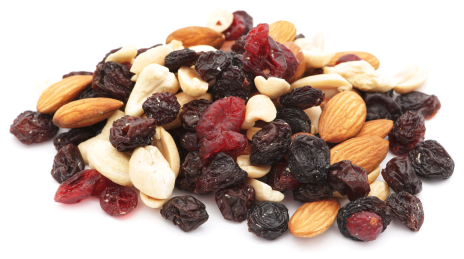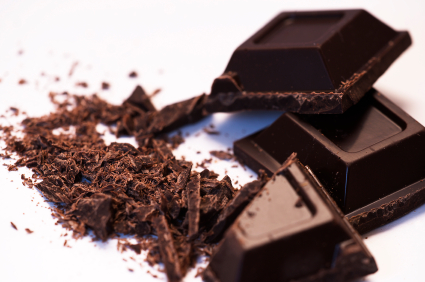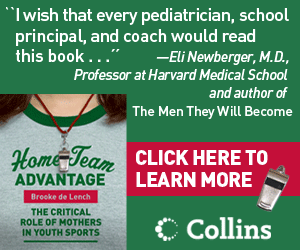Experiencing the Food & Nutrition Expo at the Academy of Nutrition & Dietetic Association's annual convention is an eating adventure! Envision a huge expo hall filled with vendors offering tastes of their latest food and nutrition products. Several hours and many calories later, I emerged from the Expo with a sampling of items that can contribute to an effective sports diet. Here is brief snapshot of some of what I saw.
Energy bars. For active people who eat on the run, energy bars can be a handy emergency food. While bars should not routinely be used as meal replacements, they can certainly be a handy pre- and post-workout snack. When looking for "the best" bars, choose ones that are made with wholesome ingredients that you recognize. For example:
- KIND Bars. Their newest product, "Healthy Grains," is similar in texture to a rice krispy treat. The Maple Pumpkin Seed KIND Bar contains five "super grains" (oats, millet, quinoa, amaranth and buckwheat) plus pumpkin seeds, honey and maple syrup. The end result: a tasty gluten-free source of whole grains that are "chewy with a crunch."
- Zing Bars, created by two dietitians, offer a variety of 100% natural, gluten- and soy-free bars that are high in protein and fiber, and taste great. As we all know, nutrition is only good if it gets into the tummy. Zing Bars do the job!
- The NOW Bar is made with identifiable pieces of chopped cranberries, almonds, and peanuts that are stuck together with honey, apple juice concentrate and brown rice syrup. Although a bit sticky, they are tasty and also gluten-free (if that's your preference).
- Gluten-free snacks are all the rage. In addition to the gluten-free bars mentioned above, check out "Mary's Gone Crackers." My clients rave about these crispy, tasty, vegan, dairy-free, and wheat-free snacks. The Black Pepper variety contains brown rice, quinoa, flax, and sesame seeds. They have a rich, satisfying flavor that appeals even to wheat-eaters. Buyer beware: As with most gluten-free foods, they are expensive: $4.50/box; this comes to about $0.75 per 140-calorie serving. (In comparison, Wasa Crackers are about $0.50 for 140 calories.)
Nut butters. Finally, peanut butter is being sold by the pouch, instead of by the jar! This makes it easier to toss into a gym bag or pocketbook. Both Justin's (www.Justins.com) and The Peanut Butter & Company (www.IlovePeanutbutter.com) offer "easy squeezy" pouches in a variety of flavors. These peanut butter portions enable you to create satiating on-the-road snacks with PB and banana, crackers, or apple, to say nothing of the bagel you pick up on your way to the kid's school or your office. For weight-conscious athletes, nut butter in a pouch offers a controlled portion with 90- or 180- calories in a pouch (1 or 2 tablespoons). The good news is nuts are rich in vitamin E and health-protective fats, and nut-eaters are not fatter than nut-avoiders!
Ice cream options: If you (and your kids) enjoy frozen desserts, take a look at Yonanas Healthy Dessert Maker (www.yonanas.com). For a treat that looks and tastes like soft-serve ice cream, simply toss into the kid-friendly Yonanas machine some frozen banana chunks and other frozen fruit as desired. Out comes "ice cream." The key is to use well-ripened bananas with brown speckles. Speckles mean the banana is sweeter than an all-yellow or green banana. During the ripening process, the starch (complex carbohydrate) in the green banana converts into sugar (simple carbohydrate). Banana adds the creamy texture and takes on the flavor of the other add-ins. (Think maple walnut, blueberry, etc.) You can also make "sorbet" with just frozen fruit.
Smashed fruit, such as PowerBar's Fruit Smooshie, is a moist alternative to dry energy bars. Mott's has a similar product. Their portable applesauce pouch offers 40 calories and no added sugar. Makes an easy-to-swallow, energy-boosting alternative at half-time, preferable to a slow-to-chew bar. The pouches are heavier, however; their water content will add weight to your fuel belt or backpack.

Dried fruit is making a big comeback, and certainly offers a healthier sugar-fix than candy. Prunes have been re-named as dried plums, to create a new image. SunSweet's PlumSweet (yogurt-covered dried plum pieces) offer a candy-like snack for today's eaters.
Candy: While healthy food predominates at the Academy of Nutrition & Dietetics Association's Food and Nutrition Expo, The National Candy Association (NCA) is also there, offering a guide to moderate candy consumption, so you can treat your self (guilt-free) to one of life's little pleasures.
Candy need not be consumed "all or nothing"! In case you have ever wondered what "moderation" means when it comes to eating candy, an acceptable intake is 50 to 100 calories per day. Here's what that looks like:
- 15 to 25 small jelly beans
- 1 snack/fun-size candy bar
- 2 to 4 strings of licorice
- 3 to 5 pieces of hard candy
- 2 bite-sized peanut butter cups, and
- chewing gum as desired.
To stay within "moderation," your best bet is to portion candy into little baggies.
If you prefer one weekly candy allotment, limit your intake to 3/4 cup chocolate covered raisins, 1/2 cup chocolate chips, 50 to 100 gummy bears, or 1 to 2 candy bars. And it goes without saying, pineapple, raisins, dried plums, and dates offer sweetness with far more nutrients.-
Chocolate: While sugary candy can be an effective alternative to gels during extended exercise, a little dark chocolate afterwards can be

a health-promoting snack. Numerous studies suggest people who include modest amounts of dark chocolate enjoy heart-health benefits such as lower blood pressure and reduced risk of death from heart disease. Obviously, you need to enjoy dark chocolate in the context of an overall healthy diet. A product marked 70% cocoa means 30% of the product is sugar and other ingredients...
Vegetarian Resources: If you are looking for a blueprint for plant-based eating, "Becoming Vegan" by Brenda Davis RD is worth reading. Extensive, but easy to understand. Another helpful resource is the Vegetarian Resource Group. If you choose to eat no meat, you want to be sure you are still getting the nutrients you need for good health and top performance.
Choose your food wisely, enjoy it mindfully, and have fun with your high energy!
Nancy Clark, MS, RD CSSD (Board Certified Specialist in Sports Dietetics) counsels active people at her private practice in the Boston-area (Newton, MA; 617-795-1875). For more information, read her NEW Sports Nutrition Guidebook 5th Edition and her food guides for marathoners, soccer players, and cyclists. They are available at www.nancyclarkrd.com. Also see www.sportsnutritionworkshop.com for online CEUs.









